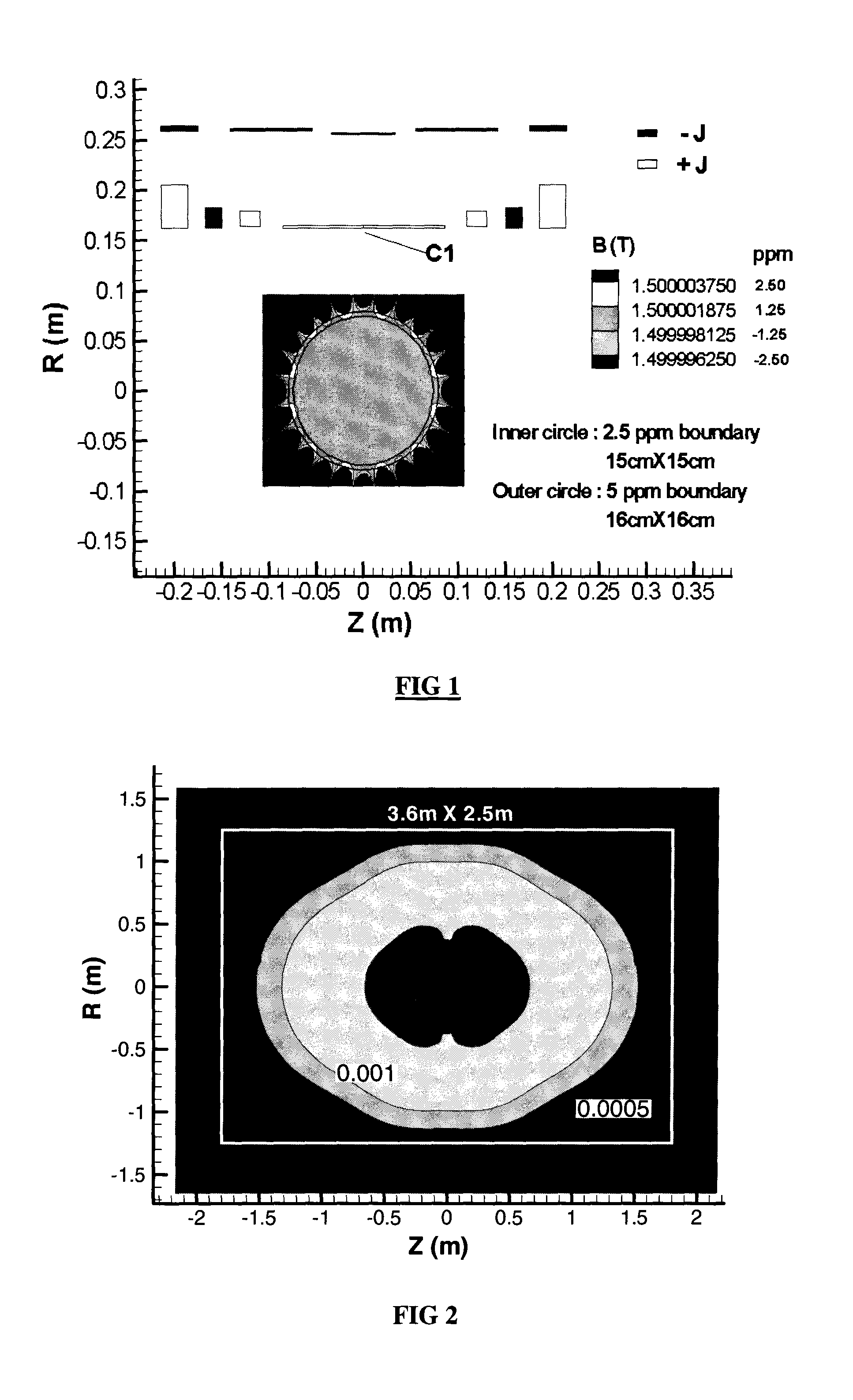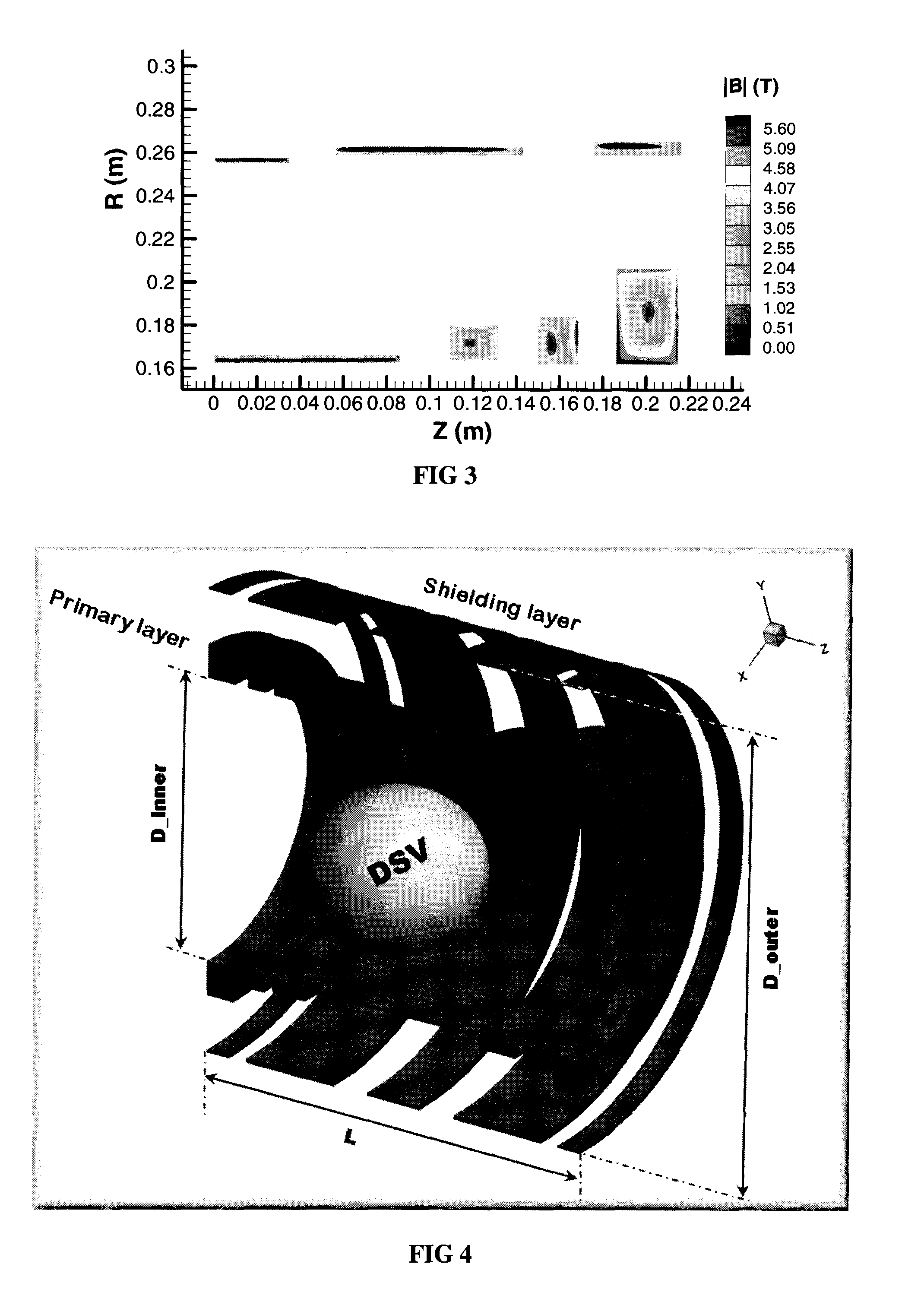Magnets for use in magnetic resonance imaging
a magnetic resonance imaging and magnet technology, applied in wave based measurement systems, instruments, reradiation, etc., can solve the problems of high cost, high specialised and expensive infrastructure, and many people suffering from claustrophobia, so as to reduce the net force
- Summary
- Abstract
- Description
- Claims
- Application Information
AI Technical Summary
Benefits of technology
Problems solved by technology
Method used
Image
Examples
example 1
1.5 T Magnet
[0060]This example, shown schematically in FIG. 1, illustrates a superconducting magnet of the present invention. In broad overview, the magnet employs twelve coils and has a cold bore length and a cold bore inner radius of approximately 0.43 and 0.165 meters, respectively. On the primary windings of the magnet, all of the coils are wound in the same direction (i.e. have the same polarity) apart from the coils second from the ends, i.e. those two coils approximately centered at 0.16 m from the centre. These coils are wound in the opposite direction to all others on the primary (i.e. have reverse polarity).
[0061]The central coil on the primary winding (i.e. that coil spanning the z=0 position, denoted C1) is longer than the others (and comprises approximately 38% of the total magnet length). This feature, when combined with the topology of the other coils, results in improved homogeneity compared to other coil configurations for a magnet of the same overall length. There ...
example 2
3 T Magnet
[0067]This example, shown schematically in FIG. 5, illustrates a 3 T superconducting magnet design using a structure according to a second embodiment of the invention.
[0068]As shown in FIG. 5, the coil structure is less than 0.5 meter in total length while a homogeneous dsv is generated over an ellipse of major axis 17 cm and minor axis approximately 15 cm wherein the homogeneity of the dsv varies by less than + / −5 ppm over that volume. The magnet uses the same topology as that in example 1, where the coils next to the end coil on the primary are of opposite polarity to all others in the primary coil set. The middle coil in this example extends approximately 45% of the total length of the coil structure and this feature again provides the advantage when combined with the other features of producing a relatively large and useful imaging region.
[0069]The stray fields in this magnet are well controlled, being approximately 1.8 m and 1.25 m in the axial and radial directions r...
PUM
 Login to View More
Login to View More Abstract
Description
Claims
Application Information
 Login to View More
Login to View More - R&D
- Intellectual Property
- Life Sciences
- Materials
- Tech Scout
- Unparalleled Data Quality
- Higher Quality Content
- 60% Fewer Hallucinations
Browse by: Latest US Patents, China's latest patents, Technical Efficacy Thesaurus, Application Domain, Technology Topic, Popular Technical Reports.
© 2025 PatSnap. All rights reserved.Legal|Privacy policy|Modern Slavery Act Transparency Statement|Sitemap|About US| Contact US: help@patsnap.com



